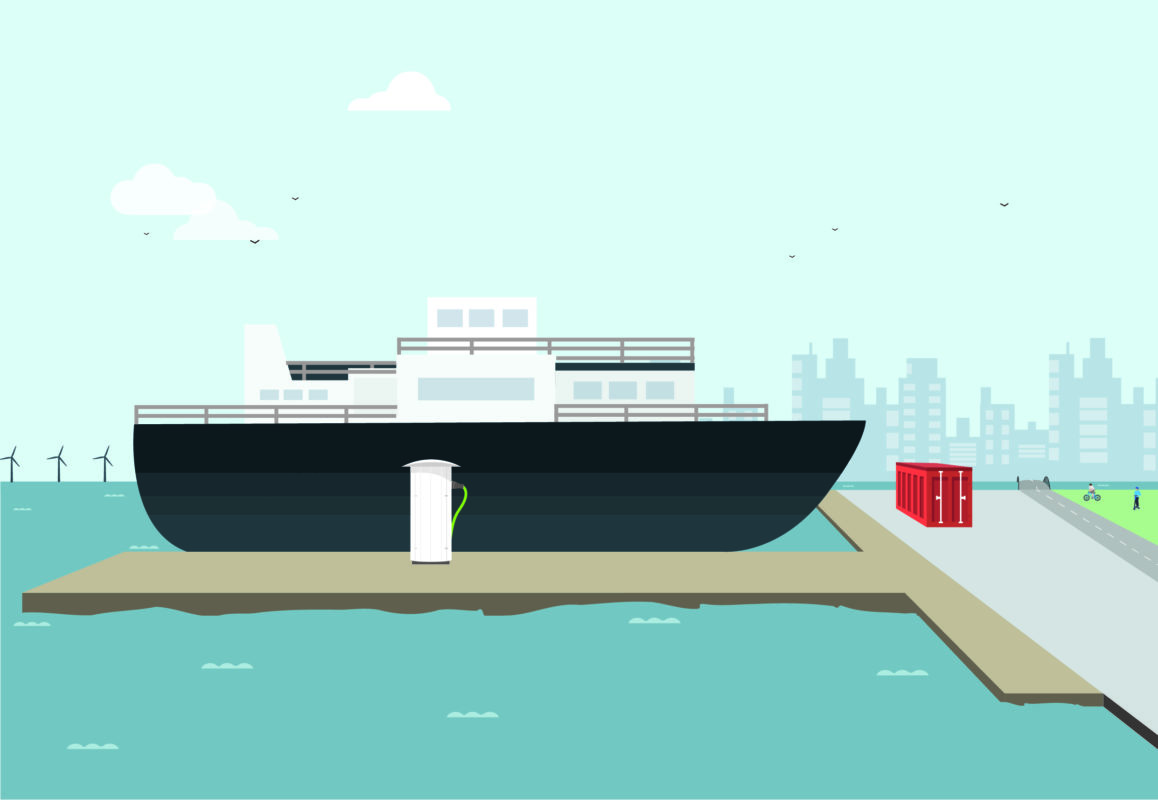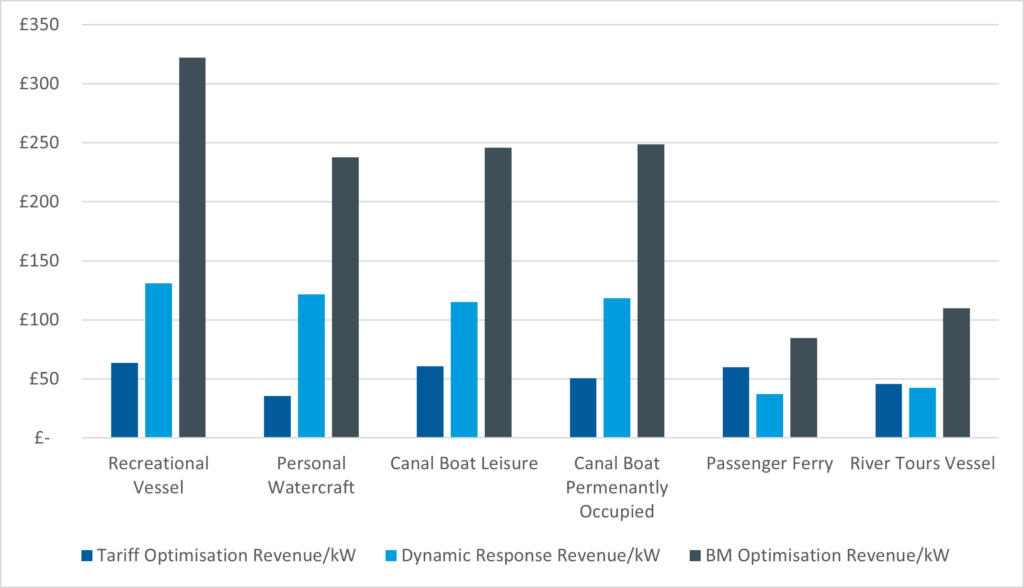
- Categories:
- News
- /
- Press Releases
Setting Sail to a Greener Future: Optimising Revenue Streams for Vessel-to-Grid Charging
As we work towards achieving Net Zero emissions, the marine industry is becoming increasingly innovative. For small or medium-sized boats, switching to an electric powertrain seems like an appealing option. Although there are currently only a few electric vessels in use globally, the electric vessel market is projected to grow to $16.6 billion by 2031 with a compound annual growth rate of 12.9% (Allied Market Research, 2023).
As electric vessels become more common, there will be new challenges to overcome, such as the installation of charging infrastructure that can withstand marine environments and the limitations of the power grid at marinas. However, this shift could also bring opportunities, one of which is in the form of bi-directional charging of electric vessels, Vessel-to-Grid.
By implementing Vessel-to-Grid (V2G), there are numerous benefits both financial and non-financial. These benefits include the ability to actively manage the battery health of vessels; efficiently manage a limited grid connection; reduce carbon through a time-of-use carbon-optimised charging schedule and earn profits through participation in energy flexibility markets.
The Virtual Bunkering of Electric Vessels (VBEV) project looked at precisely these things. This six-month feasibility study brought together electric boat charging operator, Aqua SuperPower, bi-directional charging manufacturer, Indra Renewable Technologies as well as research and technology experts Cenex and the University of Plymouth.
As part of the project, we identified leading marine archetypes that could be suitable for V2G charging. Next, we simulated the usage of these vessels over a whole year. Additionally, we performed a thorough analysis of possible revenue streams available for V2G propositions, to identify which would be the most applicable. We then combined the leading marine archetypes with the most applicable revenue streams and simulated the combinations in our in-house REVOLVE model. By using a common metric for measurement, we were able to compare different use cases with appropriate the charging power.
Figure 1: Annual revenue for Vessel to Grid Use cases, per kW of chargepoint power
Based on our analysis, revenues of up to several hundred pounds per kW of chargepoint power appear possible for V2G, which is significantly higher than what could be earned from smart charging alone. Whilst actual values obtainable in practice over the coming years may be less due to factors such as forecast error and reductions in price volatility, it will likely still be an excellent revenue stream for the best archetypes. Some marine archetypes are utilised less than 10% of the year making them especially well-suited, these will obtain significantly higher V2G revenue values than road based EVs, which are in use more frequently.
Analysis and modelling for VBEV use cases have yielded several key recommendations; Firstly, there’s a crucial need for customer education, emphasising that income generation relies on vessels being connected to a charger whenever they’re moored or not in use for an extended period. This behaviour aligns well with the natural mooring process of vessels, but operators still require education on this front. As for target customer segments, recreational vessels, equipped with a dedicated chargepoint, emerge as the most logical initial market for V2G implementation. In terms of revenue stream optimisation, behind-the-meter tariff optimisation and providing the National Grid ESO Dynamic Regulation service are leading opportunities. By stacking with the Capacity Market or DNO services where possible, further improvements can be made.
The VBEV project underscores the financial viability and environmental benefits of bi-directional charging infrastructure in the marine sector. With revenue potentially reaching several hundred pounds per kW of chargepoint power, V2G propositions in this domain are of considerable value, particularly for vessels with low utilisation rates. Moreover, the leading archetype i.e., recreational vessels, numbers in the tens of thousands across the UK. With these numbers, it could provide a significant source of flexibility to the GB energy system, potentially to the scale of hundreds of MW. Thereby making it a promising avenue for further research and development of V2G in the marine sector.
For further information, read our full report on Revenue Streams for Bi-directional Charging of Electric Vessels here
